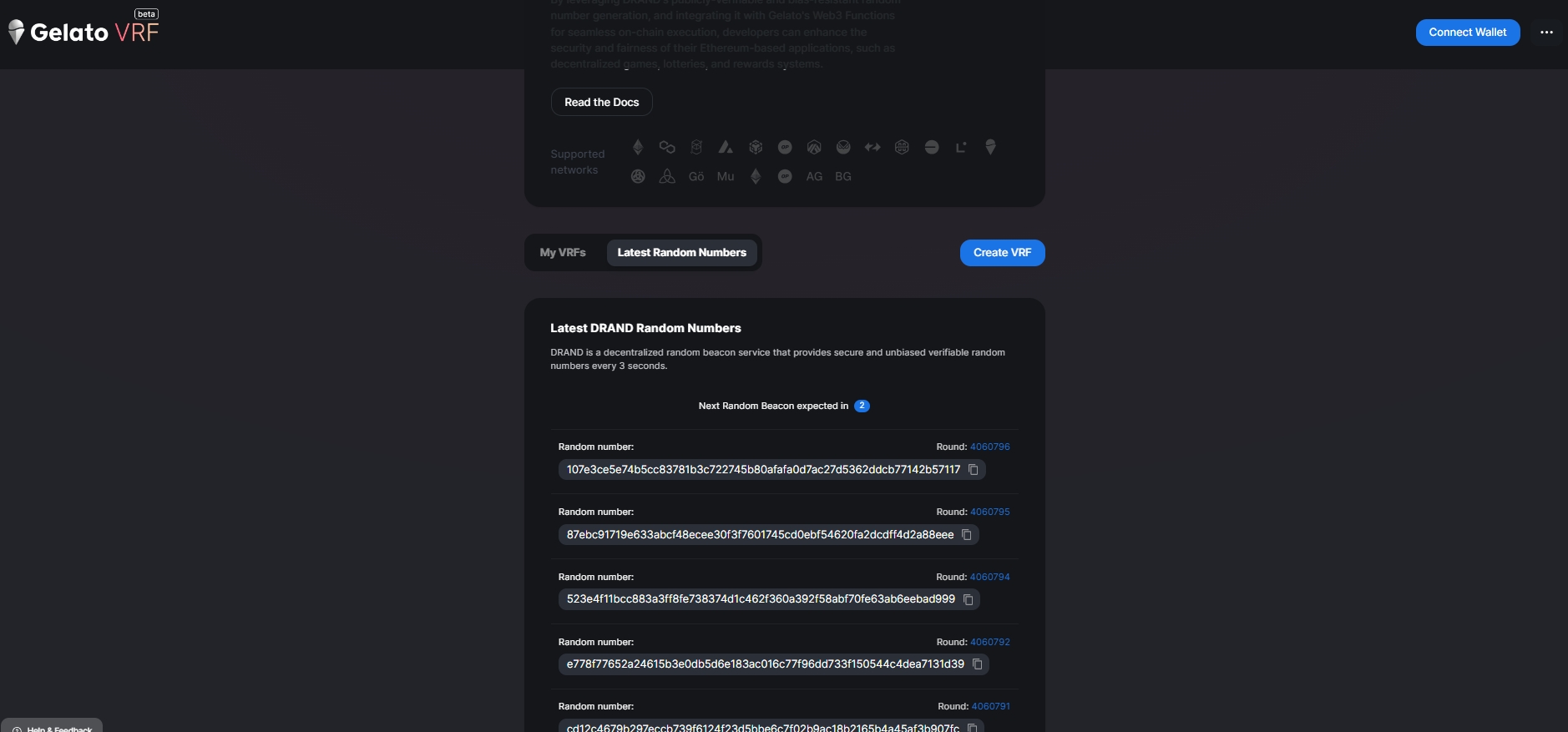Gelato VRF
Gelato VRF and Trustworthy Randomness
Mechanism: Uses Drand, a decentralized source for random numbers.
Benefits: Provides genuine, verifiable random values for blockchain applications.
Applications of Gelato VRF
Gaming and Gambling: For fair outcomes in online games and decentralized gambling.
Decentralized Finance (DeFi): Random selections for lotteries in DeFi protocols.
NFT Generation: Random trait generation for unique digital assets.
Protocol Decision Making: Randomized selections for validators or jurors.

Steps to Set Up Gelato VRF
Set Up Development Environment: Install either Foundry or Hardhat.
Install Gelato VRF Contracts: Use specific commands for Hardhat or Foundry.
Inherit
GelatoVRFConsumerBaseContract: Incorporate it into your contract.Request Randomness: Call
_requestRandomness()function.Implement Callback Function: Define how your contract handles the randomness response.
Include
dedicated msg.sender: Essential for contract security and function.
Quick Start
Step 1: Set Up Your Development Environment
Make sure you have Hardhat or Foundry ready for use.
Step 2: Install Gelato VRF Contracts
For Hardhat, clone the repository and set up the environment. For Foundry, use the forge install command.
Step 3: Inherit GelatoVRFConsumerBase Contract
Create a contract that inherits from GelatoVRFConsumerBase.
Step 4: Request Randomness
To request randomness, call the _requestRandomness() function. You should protect the call since it will take from your 1Balance. The data argument will be passed back to you by the W3F.
Step 5: Implement Callback Function
Step 6: Include Dedicated msg.sender
When you're ready to deploy your Gelato VRF-compatible contract, an important step is to include the dedicated msg.sender as a constructor parameter. This ensures that your contract is set up to work with the correct operator for fulfilling the randomness requests.. It's crucial for ensuring that only authorized requests are processed.